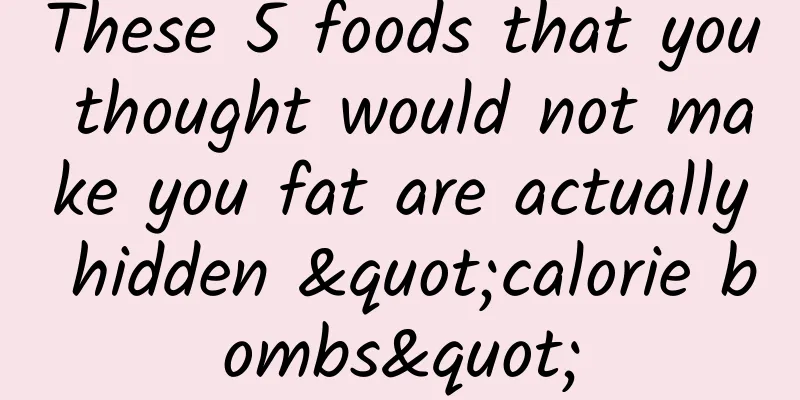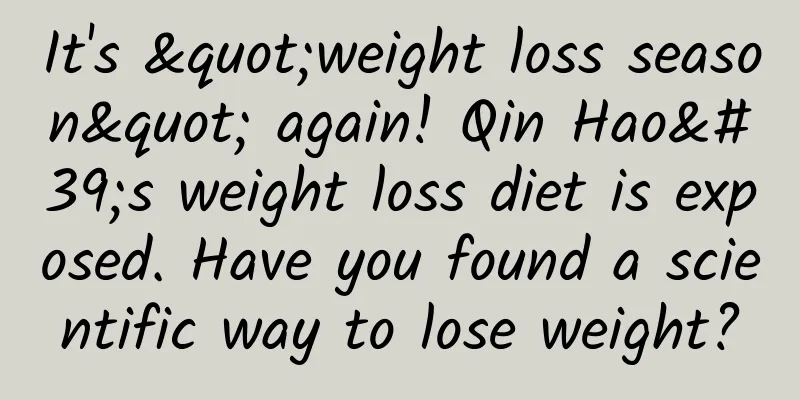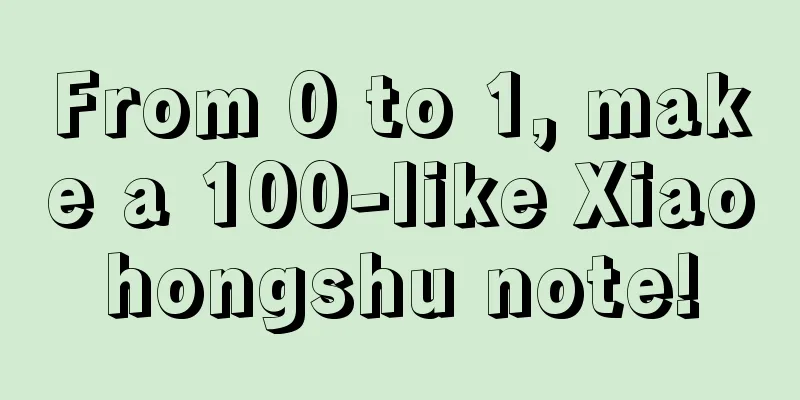These 5 foods that you thought would not make you fat are actually hidden "calorie bombs"

|
It's the season to show off your body again, and losing weight has been put on the agenda for many people. But do you think that "healthy food" must be low in calories? Be careful of these "calorie assassins" disguised as nutrition! They may seem harmless and even be touted as good helpers for weight loss, but they are actually high in calories and may make you fatter. Copyright images in the gallery. Reprinting and using them may lead to copyright disputes. These 5 foods seem healthy It's actually a "calorie bomb" For a more intuitive understanding, we compared the calories of different portions of food with a bowl of two taels of rice (100 grams, about 116 kcal) as a reference, which is equivalent to the amount of staple food in a meal for people with small appetites. This is the amount of 110g of rice. 100g of rice is basically the same as this. 1 Fruit and vegetable chips: Masters of disguise for fruits and vegetables Rice Index: 4.8✖️🥣 (100g) Many people think that eating fruit and vegetable chips is equivalent to supplementing vitamins, but they don’t know that eating them is equivalent to “drinking oil”! After apples, pumpkins, and bananas are sliced, most brands will use low-temperature frying to allow the water to evaporate while absorbing the fat. A 100g bag of mixed fruit and vegetable chips can contain more than 30g of fat, which is equivalent to drinking 3 tablespoons of oil. For a product with sales of over 100,000 on a certain e-commerce platform, the second ingredient on the ingredient list is “refined vegetable oil,” with an oil content of up to 41.5%. What’s even more heartbreaking is that nutrients such as vitamin C have already been lost during processing. Alternative: If you want to eat crispy fruits and vegetables, it is recommended to choose low-temperature freeze-dried products without additives, which only contain the food itself and no other ingredients. This process preserves more nutrients and does not bring extra calories such as oil and sugar. 2 Whole grain biscuits: "fake whole grains" with added sugar and oil Rice Index: 4.3✖️🥣 (100g) If you look carefully at the ingredient list of biscuits with "high fiber" and "whole grains" printed on the package, you will find that whole grains may only be ranked third, with wheat flour and vegetable oil being the first two. In order to cover up the rough taste, merchants will add a lot of sugar and oil. The more ingredients you add, the closer you are to the front. Eating four pieces of a certain popular whole grain biscuit is equivalent to swallowing a tablespoon of sugar and two tablespoons of oil. The calorie content is even more astonishing - about 500 calories per 100g, which is 4.3 times that of white rice (116 calories/100g). Alternative: Since biscuits require the addition of oil during the production process, which results in high calories, you can choose coarse grain crisps whose ingredient list only contains coarse grains and water. 3 Flavored yogurt: one cup equals 5 sugar cubes Rice index: 2.2✖️🥣 (a 250mL bottle of yogurt) Sugar-free yogurt is indeed a healthy food, but most yogurts on the market have long become "desserts" in order to taste better. A 200g box of flavored yogurt generally contains 16~25g of sugar [sugar content in yogurt ≈ [(carbohydrate content - 5) total weight/100], which is roughly equivalent to 5 sugar cubes. Some even have higher sugar content than the same amount of cola. Do you know which of the following two ingredient lists is for yogurt and which is for cola? The answer is: The left one is yogurt, and the right one is cola. Did you guess it right? Alternative: If you want to buy healthy yogurt, you need to choose sugar-free yogurt (only raw milk and fermented bacteria), or yogurt with a carbohydrate content of less than 10 grams per 100 grams, and relatively less sugar. 4 Freshly squeezed juice: You drink sugar water but lose nutrition Rice Index: 2.1✖️🥣 (a 500mL bottle of orange juice) “Drinking juice = eating fruit” is the biggest misunderstanding. First, the juicing process will cause a large amount of nutrition in the fruit to be lost. The dietary fiber in the pulp is discarded, and nutrients such as vitamin C will also be lost quickly after juicing - according to the experimental results of "Analysis of Vitamin C Loss Rate of Fresh Juice", after juicing, the vitamin C in cucumber juice, mango juice and orange juice lose 84.11%, 58.92% and 32.76% respectively. What is more alarming is that fruit juice will make you consume too much sugar without knowing it. A 300ml glass of orange juice requires 4 to 5 oranges to squeeze, and the sugar content is comparable to cola (sugar up to 26g), but the feeling of fullness is far less than eating 2 oranges directly, which can easily lead to excessive calories. Data source: "Chinese Food Composition Table (Standard Edition/Volume 1)" Image source: Self-made by the author In addition, without the "buffering" effect of dietary fiber, the sugar in the juice will be absorbed faster, causing a rapid rise in blood sugar. This surge is not only dangerous for diabetic patients, but may also increase the risk of metabolic diseases in the long term. Alternative: If you like to drink fruit juice, you can use a machine to crush the fruit without removing the residue , so that the loss of dietary fiber will be reduced. You can also add some lemon juice during the crushing process to protect vitamin C. However, it is recommended that you eat more fresh fruits. 5 Ringing roll: the big oil absorber in hot pot Rice Index: 7.2✖️🥣 (8 bell rolls calories compared to 2 taels of rice) Soy products sound healthy? The bell roll (beancurd roll) is an ingredient for hot pot or spicy hot pot. It is full of bean fragrance and crispy and dense, and is loved by foodies. The reason why it is so delicious is that it is a fried bean product. After frying, the fat content easily exceeds 70%. Taking the one above as an example, the fat content is nearly 90%, and the amount of oil is higher than that of soybeans themselves. What's even more terrifying is that when it is cooked in the spicy hot pot, it can absorb a lot of butter and red oil. After eating one ring roll, the calories easily exceed 80 calories, and eating three is equivalent to drinking an extra bowl of oil soup. Alternative: Use tofu skin instead of bell rolls , which is high in protein, low in fat, and doesn’t absorb as much oil. These "healthy" labels Maybe it's all a word game by the merchants Sometimes you may crave a snack and want to buy a relatively healthy product to reduce calorie intake. Promotional words such as "0 sucrose", "0 fat", "non-fried" and so on make people think that this kind of food is low in calories and it is not easy to gain weight after eating it. Some conscientious brands can indeed achieve low calories as advertised, but some are not. 1 “0 fat” ≠ low calories Many people think that "0 fat" means low-calorie food, which is actually a common cognitive misunderstanding. The national standard (GB28050-2011) requires that as long as the fat content in every 100mL or 100g of food is less than 0.5g, it can be claimed to be "fat-free", but this does not mean low in calories. Generally, there are two types of "0 fat" foods: One type is that the food itself is low in fat or zero fat . For example, beverages generally do not contain any additional oil, so they are definitely zero fat. However, the calories in food do not only come from fat. If there is more protein or carbohydrates (including sugar), the calories will also be high . For example, juice, although zero fat, the calories brought by sugar should not be underestimated. Another reason is that the fat content has indeed been reduced due to process improvements or low-fat ingredients. However, in order to make up for the lack of taste, some products will add sugar, starch, thickeners, etc. to improve the taste, which may increase the total calories. Tips to avoid pitfalls: For products with zero fat, pay attention to the nutritional information to see how much carbohydrates and energy they contain. Choose products with less sugar and energy from the same category, and avoid adding extra calories by adding other ingredients to the flavoring. 2 “0 sucrose” ≠ sugar-free According to the General Principles of Nutrition Labeling for Prepackaged Foods, only products with a sugar content of ≤0.5g per 100mL can be labeled "sugar-free". However, many products on the market claim to have "0 sucrose", but in fact they contain other forms of sugar - honey, fruit juice, fructose syrup, glucose, maltose, etc., which are still sugar in essence. For example, a popular "0 sucrose" lactic acid bacteria beverage, although it does not contain sucrose, has added concentrated peach juice and edible glucose. This bottle of beverage contains 7.6 grams of sugar per 100mL, which is not even considered a low-sugar beverage (sugar less than 5 grams/100mL). Tips to avoid pitfalls: When you see "0 sucrose", look at the ingredient list first and be wary of these "sugar substitutes": high fructose corn syrup, maltose syrup, concentrated juice, honey, glucose, etc. 3 “Non-fried” ≠ less oil Non-fried potato chips may sound like they contain much less oil than fried ones, but they are just processed in a different way: from deep-frying to spraying and drying or brushing with oil to baking, which uses a lot of oil. Take non-fried potato chips as an example. Using hot air drying instead of frying may seem low in fat, but in order to maintain crispness, a lot of oil must be sprayed during processing. From the fat content comparison of fried and non-fried potato chips below, the fat content of non-fried chips is not much lower than that of fried chips. Tips to avoid pitfalls: When looking at the fat content in the nutritional table, be sure to pay attention to the unit and unify it into the content per 100 grams when comparing. Practical tips for avoiding traps At the end of the day, if you know how to read the information on food packaging, then you can see the essence of the food no matter how it is promoted. 1 Anatomy Ingredients ● Look at the order of the ingredients list: Ingredients are arranged from high to low according to their content. The higher the content, the higher the ranking . If white sugar and vegetable oil are ranked in the first three, the energy level is generally not low. ● Beware of the mystery of the word “etc.”: Some whole wheat bread says “wheat flour, whole wheat flour, etc.”, but the whole wheat flour content may be very small, it is just used to make the name look natural. ● Understand the disguises of sugar and oil: high fructose corn syrup, maltodextrin, concentrated fruit juice... are all deformations of sugar; cocoa butter substitute, margarine, non-dairy creamer, etc. are all hidden versions of oil. If the ingredient list shows the composition of the food, then the nutritional labeling shows the value of the food to us. 2 Learn to read nutrition facts ● First look at “per serving” or “per 100g” : A certain imported cereal is marked “each serving (30g) contains 5g of sugar”, which is 16.7g per 100g, higher than Coke. ● The most important thing is to look at the energy: The energy value is the most intuitive way to determine whether a food can make you fat. The energy unit in the nutrition information table is kilojoule (kJ). When comparing it with the demand, you need to divide it by 4 (to be more precise, 4.184) to know how many kilocalories it is. ● Keep an eye on fat and sugar: Energy comes from fat, sugar, and protein, and any one of them may increase energy. Some products have low energy, but too much fat and sugar is definitely not a good thing. With the same energy, high protein content and low fat and sugar content will be more conducive to health and weight loss (for healthy people). Real weight loss food does not need fancy packaging and advertising slogans. Watch less ads and more labels and nutrition facts. Next time you go to the supermarket, take a minute to look at the truth behind the packaging - your body deserves more genuine food. References [1] Zhang Zhiping, Pan Zhaoguang. Analysis of vitamin C loss rate in freshly squeezed juice[J]. Guangdong Chemical Industry, 2017, 44(17):2. DOI:10.3969/j.issn.1007-1865.2017.17.039. [2] Yang Yuexin. Chinese Food Composition Table 6th Edition Volume 1[M]. Peking University Medical Press, 2018 [3] GB 28050-2011 National Food Safety Standard General Rules for Nutrition Labelling of Prepackaged Foods [4] GB 7718-2011 National Food Safety Standard General Rules for Labelling of Prepackaged Foods [5] Chinese Nutrition Society. Encyclopedia of Chinese Nutrition Science, 2nd Edition (Volume 1). People's Medical Publishing House, 2019 Planning and production Author: Li Chun, registered nutritionist Reviewer: Zhang Na, Associate Researcher, Peking University School of Public Health Planning丨Wang Mengru Editor: Wang Mengru Proofread by Xu Lailinlin |
<<: Everything grows on sunlight? Deep-sea creatures: Guess how I survived
Recommend
Heat stroke makes man's organs feel like they've been boiled? It's not the high body temperature that kills cells directly!
Hot, hot, hot Hot, hot The most widespread high t...
Narrative Change Training Camp: From Passive to Active, Make Your Life More Controlled
Narrative Change Training Camp: From Passive to A...
Tips for developing a big Tik Tok account that attracts a lot of fans!
So what kind of influencers have more long-term a...
When brain-computer interfaces become a reality, how far are we from cyberpunk?
Figure 1: Header image, source: Yunnan University...
What is considered advanced Android? I suggest you master these points
Is Android development dead? [[277440]] Many peop...
Design of B-terminal fission activity template
Attracting customers is the first step for compan...
Humans cannot marry close relatives, but what about animals?
I recently saw an interesting content: "Why ...
Qitaihe Mini Program Customization Company, how much does it cost to customize a tea set mini program?
In order to better penetrate into various industr...
“The promotion effect increased by 30% in a short period of time”? How do people play with information flow?
I wonder what the bosses think about information ...
Analysis of bidding promotion in 2B industry!
When 2b products are being sold and acquiring cus...
The most comprehensive guide to promoting good products on Zhihu
There is a very good question on Zhihu: Why do or...
2019 iPhone wish list: Is there anything you want?
The days when Apple's entire company's fa...
Li Liwei Equity Incentive Training Camp 2nd Baidu Cloud Download
Resource introduction of the 2nd Li Liwei Equity ...
The secret of WeChat business promotion that 99% of people don’t know!
In this era, competition is fierce in all walks o...
Entry-level products are awesome! Tencent invests $1 billion in Meituan Dianping
[[154656]] There are really big news on the Chine...









